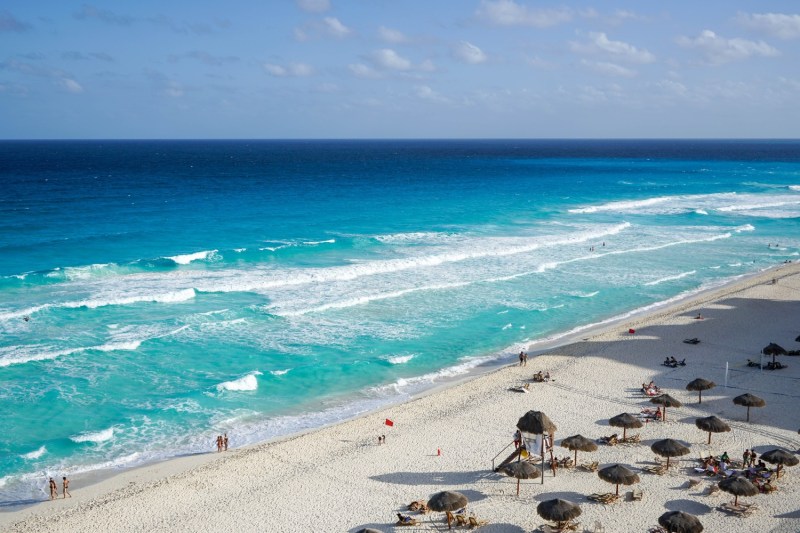
Cancun, the crown jewel of Mexico’s Riviera Maya, has unfortunately witnessed a recent surge in drowning incidents, prompting local authorities and tourism officials to issue urgent pleas for caution among beachgoers.
Over the past two weeks, five reported people have lost their lives drowning on the beaches of Quintana Roo.
While Cancun’s turquoise waters and pristine coastline welcome sun-seekers from across the globe, the powerful currents and unpredictable waves pose a very real threat, especially for those unfamiliar with swimming in the ocean.
What’s so dangerous about the waters of Cancun?
One of the primary dangers lurking beneath Cancun’s idyllic surface is the presence of rip currents, also known as riptides. These strong, channeled currents can quickly pull even experienced swimmers out to sea. Riptides are often difficult to spot, making it crucial for visitors to be aware of the warning signs, such as choppy or discolored water, breaks in the wave patterns, and foam or seaweed streaming out to sea.
Regarding the recent drownings, Secretary of Citizen Security of Quintan Roo Juli César Gómez Torres said, “The beaches, although they are very beautiful, the sea, sometimes with the waves and the wind, does not have the best conditions to enter, much less for the sea. However, there are people who venture and, well, these situations happen.”

Essential tips for Cancun beachgoers
If you’re planning to travel to Cancun, follow these tips:
- Watch for flags: Cancun beaches display colored flags to indicate the current swimming conditions. Green flags signal safety; yellow flags urge caution due to moderate currents or waves, black flags mean the beach is not open to visitors, and red flags strictly prohibit swimming due to hazardous conditions.
- Make friends with the lifeguards: Always swim near lifeguard towers, where trained professionals are equipped to respond to emergencies. Don’t hesitate to ask them for help if you feel unsure or encounter any difficulties.
- Try blue flag beaches instead: Opt for Cancun’s seven blue flag beaches, recognized for their adherence to strict safety and environmental standards. These beaches boast calm waters, gentle slopes, and dedicated lifeguards, making them ideal for families and less experienced swimmers. The seven beaches are Playa Ballenas, Playa del Niño, Playa Las Perlas, Playa Delfinens, Playa Marlín, Playa Coral, and Playa Chic Mool.
- Use the buddy system: Never swim alone, especially if you’re not a confident swimmer. Having a buddy by your side can provide invaluable support and assistance in case of an unexpected situation.
- Become an ocean expert: Familiarize yourself with basic ocean safety tips. Learn to identify rip currents, understand how to escape their grip if caught, and prioritize sun protection to avoid dehydration and heatstroke.
Bottom line
Despite the recent drowning incidents, if you’re off to Cancun this season, remember to heed the flags, befriend the lifeguards, choose calmer waters, and swim with a buddy.



